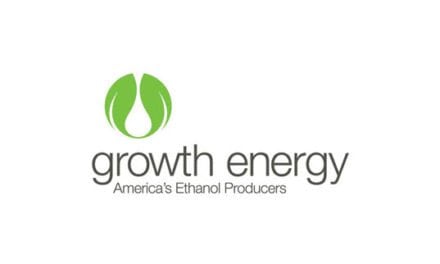Gasoline Prices Near a Seasonal Peak
This week’s highlights
1. Gasoline prices may have seen their seasonal peak.
2. The energy price environment is unclear. Events overseas have created tensions.
3. Commercial stocks of petroleum have resumed their climb; crude oil inventories are again challenging 400 million barrels.
4. Gasoline production continues to exceed ten million barrels daily.
5. Natural gas injections fell short of what is needed to achieve even the minimum storage by the start of the withdrawal period.
Sincerely, Alan LevineChairman, Powerhouse
Table covers crude oil and principal products. Other products, including residual fuel oil and “other oils” are not shown, and changes in the stocks of these products are reflected in “Total Petroleum Products.” Statistics Source: Energy Information Administration “Weekly Petroleum Status Report” available at www.eia.doe.gov
The Matrix
Gasoline prices may have seen their seasonal peak as Memorial Day approaches. Analysts are turning bearish. East Coast refiners are increasing output, reflecting cheap domestic crude oil inputs. At the same time, U.S. demand has softened as efficiencies have increased and the driving population has aged.
The recent rally in price has more to do with the transition from winter to summer grade than with underlying demand. High gasoline inventories, high refinery utilization as well as slowing demand should push prices lower as summer advances.
Technical charts show prices in a bearish configuration. Elliott Wave counts have the market attempting a rally before a decline to support at $2.87.
There is no clarity on energy prices in the current environment. Events overseas have created tension in the markets. Uncertainty in the Ukraine over the possibility of Russian denial of energy supplies has been bullish but, really, nothing has happened yet. There is a potential for restoration of Libyan production which is bearish, but political divisions remain unresolved.
Supply/Demand Balances
Supply/demand data for the week ending May 9, 2014 were released by the Energy Information Administration.
Total commercial stocks of oil rose 2.1 million barrels. Commercial crude oil supplies increased 0.9 million barrels during the report week. This resumes the build in crude oil stocks that now has reached 398.5 million barrels.
Stocks in the Strategic Petroleum Reserve fell 1.3 million barrels for the week. The SPR has lost 4.4 million barrels of oil since the end of March. The Department of Energy has been holding the first test sale of crude oil from the reserve since 1990. The sale helps assess the government’s ability to transport oil from the reserve located in Louisiana and Texas to local refiners as the domestic shale oil boom leads to an upheaval in energy logistics.
DOE also announced its plans to create a million-barrel gasoline reserve in the Northeast, after Superstorm Sandy left east coast motorists without fuel in 2012.
Crude oil imports recovered slightly, rising to 7.1 million barrels daily. A small increase, however, is not enough to mask the overall reduction in reliance on foreign crude stocks.
PADD III crude oil stocks added 2.3 million barrels. Crude oil stocks in the area are now 215.7 million barrels according to EIA. The gain in stocks reflected the continuing transfer of crude oil from Cushing, OK.
Cushing OK stocks continued their decline. There are now 23.4 million barrels of crude oil in inventory, 0.6 million barrels fewer than in the prior week.
Utilization rates fell 1.4 percentage points from the prior week’s 90.2 per cent of capacity. East Coast facilities operated at 86.7 per cent of capacity, adding 0.8 percentage points over the prior week.
Crude oil runs to stills fell 237,000 barrels per day . Almost all of the loss was on the Gulf Coast.
Gasoline production continued to exceed ten million barrels daily. Reports of the death of gasoline are apparently premature. Demand for the report week was put at 9.2 million barrels daily, nearly 500,000 barrels per day higher than last week. Using a four week average, demand is running 3.2 per cent higher than last year at this time. Exports take another 400,000 barrels daily out of the system.
Gasoline lost 800,000 barrels from stock during the report week. Inventories on the East Coast accounted for a gain of 1.0 million barrels. Stocks elsewhere fell.
Distillate fuel oil supplies fell 1.1 million barrels during the report week to 112.9 million barrels. Supplies in the U.S. lag last year’s levels by 7 million barrels, a dramatic increase from the 3.6 million barrels shortfall reported last week. East Coast storage fell to 31.5 million barrels.
Supplies of distillate fuel oil have remained below the average low level of the past five years at this time. This could provide support for prices as the year advances.
Distillate fuel oil demand was 4.3 million barrels daily. This was well above the top of the five year range. This is especially important because it comes at a time when stocks are low and distillate prices are approaching their seasonal lows.
Propane inventories added 2.5 million barrels in the U.S. PADD II stocks had a gain of 800,000 barrels. Gulf Coast supplies grew 1.4 million barrels. The recovery in propane inventories has been impressive. The effect of winter tightness has been largely eliminated. Stocks are approaching last year’s levels and the average of the past five years. Propane demand was put at 849,000 barrels per day.
Natural Gas
According to the EIA: Working gas in storage was 1,160 Bcf as of Friday, May 9, 2014, according to EIA estimates. This represents a net increase of 105 Bcf from the previous week. Stocks were 790 Bcf less than last year at this time and 959 Bcf below the 5-year average of 2,119 Bcf.
Reclassifications from base gas to working gas resulted in increased working gas stocks of approximately 8 Bcf in the East region for the week ending May 9, 2014.
The injection for the week contains both new production and an 8 Bcf reclassification. The implied flow for the week is an increase of 97 Bcf to working gas stocks.
This means the injection fell well short of the amount needed to restore inventories by the start of the next withdrawal period in November. As noted last week in our Energy Market Situation, to reach the 5-year minimum, average weekly injections through the end of October would need to be 105 Bcf.
The immediate reaction to release of the Weekly Natural Gas Storage report was bullish. Nearly ten cents were added to the price of the June futures contract. Prices since moved even higher. They remain in the recent range, however. Resistance above can be found at $4.852.
Futures trading involves significant risk and is not suitable for everyone. Transactions in securities futures, commodity and index futures and options on future markets carry a high degree of risk. The amount of initial margin is small relative to the value of the futures contract, meaning that transactions are heavily “leveraged”. A relatively small market movement will have a proportionately larger impact on the funds you have deposited or will have to deposit: this may work against you as well as for you. You may sustain a total loss of initial margin funds and any additional funds deposited with the clearing firm to maintain your position. If the market moves against your position or margin levels are increased, you may be called upon to pay substantial additional funds on short notice to maintain your position. If you fail to comply with a request for additional funds within the time prescribed, your position may be liquidated at a loss and you will be liable for any resulting deficit. Past performance may not be indicative of future results. This is not an offer to invest in any investment program.Vol. PH 03 NO. 16
Was this memo helpful? We’d like your feedback.
Please respond to [email protected]
Copyright © 2014 Powerhouse, All rights reserved.











